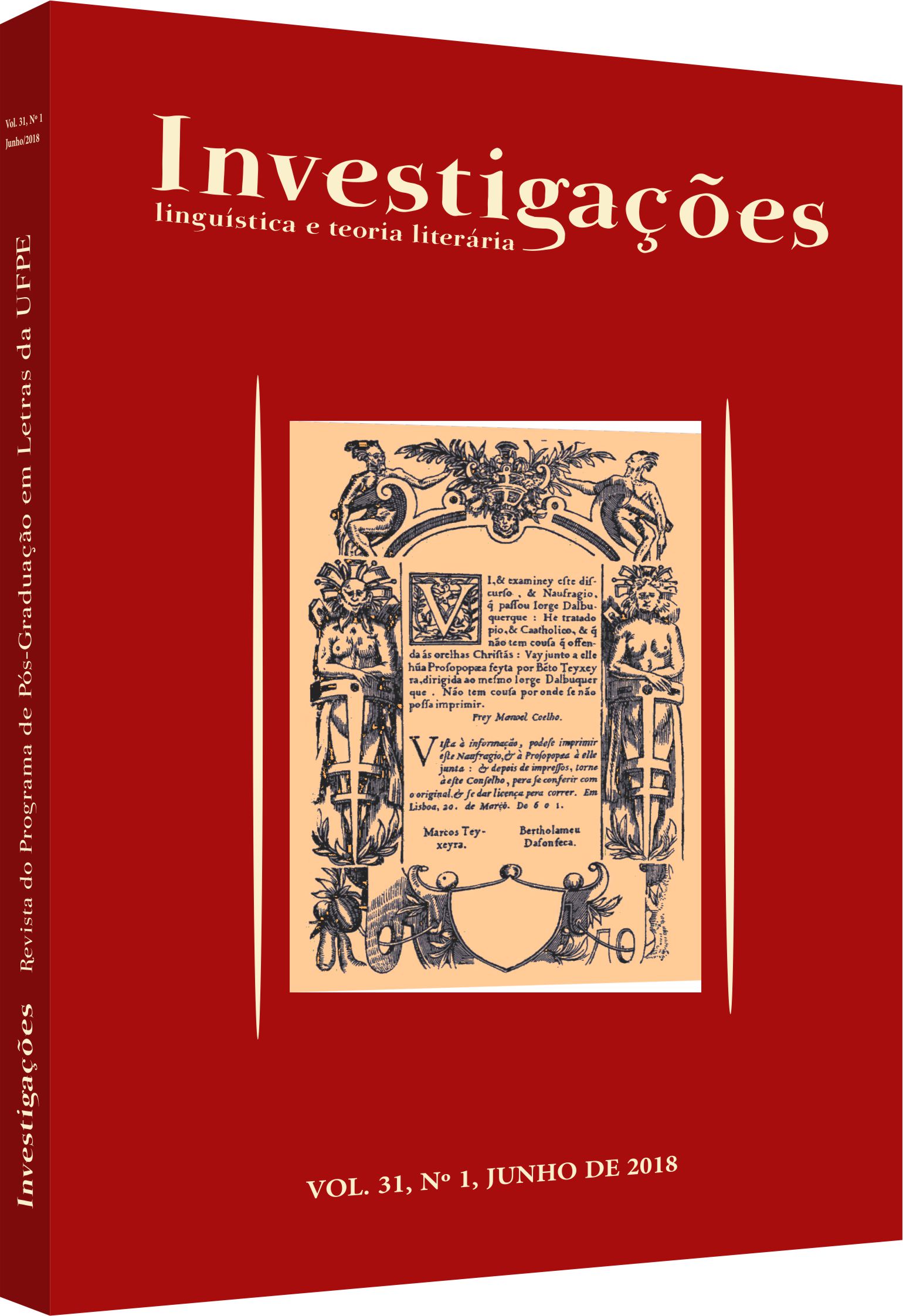Antagonismo de classes no canto II da Ilíada: Tersites e a economia da guerra
DOI:
https://doi.org/10.51359/2175-294x.2018.237842Abstract
Este artigo apresenta uma reflexão crítica acerca do canto II da Ilíada, especificamente os versos 198 a 226, centrados na personagem Tersites. Esse trecho é alvo de polêmica teórica acerca de tratar-se o conflito entre o referido soldado e os chefes da armada como um embate entre classes sociais distintas. A partir de uma perspectiva materialista histórica, propomo-nos a defender uma abordagem do embate pelo viés de classe e de luta de classes sociais como cerne de sua dinâmica.References
AUSTIN, Michel; VIDAL-NAQUET, Pierre. O mundo homérico. In: Economia e sociedade na grécia antiga. Lisboa: Edições 70, 1986.
CARDOSO, Ciro Flamarion. Sete olhares sobre a Antiguidade. Brasília: Editora Universidade de Brasília, 1998.
DETIENNE, Marcel. Mestres da verdade na Grécia Arcaica. Trad. Ivone C. Benedetti. São Paulo: Editora WMF Martins Fontes, 2013.
Eduardo Galeano: wars lie... Trecho de entrevista com Eduardo Galeano. 2015. (2’57”). Disponível em: < https://www.youtube.com/watch?v=sunZmneQzQE&t=1s >. Acesso em: 10 de maio de 2018.
DONLAN, Walter. Kin-Groups in the Homeric Epics. Classical World, Volume 101, nº 1, 2007, p. 29-39. Baltimore (USA): Johns Hopkins University Press.
FLORES-JÚNIOR, Olimar. Cinismo e retórica: o caso Tersites. In: ASSUNÇÃO, Teodoro Rennó; FLORES-JÚNIOR, Olimar; MARTINHO, Marcos. (Org.) Ensaios de retórica antiga. Belo Horizonte: Tessitura, 2010.
GATTI, Ícaro Francesconi. A Crestomatia de Proclo: tradução integral, notas e estudo da composição do códice 239 da Biblioteca de Fócio. 2012. Dissertação (mestrado em Letras Clássicas) – Faculdade de Filosofia, Letras e Ciências Humanas da Universidade de São Paulo. São Paulo.
HOBSBAWM, E. J. Class consciousness in history. In: MÉSZAROS, István (ed.). Aspects of history and class consciousness. Londres: Routledge & Kegan Paul, 1971.
HOMERO; SEYMOUR, Thomas D. The first three books of Homer's Iliad. Introduction, commentary, and vocabulary: Thomas D. Seymour. Boston: Ginn and Company, 1903. Disponível em < https://archive.org/details/firstthreebooks02homegoog>. Acesso em 15 de maio 2018.
HOMER. Homeri Opera in five volumes. Oxford, Oxford University Press. 1920. Disponível em: <http://www.perseus.tufts.edu/hopper/text?doc=Perseus%3atext%3a1999.01.0133>. Acesso em: 15 ago. 2018.
HOMERO. Ilíada. Tradução e prefácio de Frederico Lourenço. Introdução e apêndices: Peter Jones. Introdução à edição de 1950: E. V. Rieu. São Paulo: Penguin; Companhia das Letras, 2013.
LENIN, V. I. As tarefas das uniões da juventude. In: _____ . Obras escolhidas. São Paulo: Editora Alfa-Omega, 1980. t. 3, p. 386-397.
LUCÁKS, Georg. História e consciência de classe: estudos sobre a dialética marxista. São Paulo: Martins Fontes, 2003.
MARKS, Jim. The ongoing neikos: Thersites, Odysseus, and Achilleus. American
Journal of Philology, 126, p. 1–31, 2005. Baltimore (USA): The Johns Hopkins University Press.
MARX, Karl; ENGELS, Frederich. A ideologia alemã. Supervisão ed. Leandro Konder. Trad. Rubens Enderle, Nélio Schneider e Luciano C. Martorano. São Paulo: Boitempo, 2007.
______. Manifesto Comunista. Organização e introdução: Osvaldo Coggiola. Trad. Álvaro Pina. São Paulo: Boitempo, 2005.
OSBORNE, Robin. Homer’s Society. In: FOWLER, Robert (editor). THE CAMBRIDGE COMPANION TO HOMER. Cambridge: Cambridge University Press, 2006.
PAULO NETTO, J. Introdução ao estudo do método de Marx. São Paulo: Expressão Popular, 2011.
POSTLETHWAITE, N. Thersites in the 'Iliad'. Greece & Rome, 35, nº 2, p. 123-136, out. 1998. Cambridge University Press.
SAINTE CROIX, Geoffrey Ernest Maurice de. La lucha de clases en el mundo griego antiguo. Trad. Teófilo de Lozoya. Barcelona: Editorial Crítica, 1988.
THALMANN, W. G. Thersites: comedy, scapegoats, and heroic ideology in the Iliad. Transactions of the American Philological Association, Volume 118, 1988, p. 1-28. Baltimore (USA): Johns Hopkins University Press.
VIDAL-NAQUET, Pierre. O mundo de Homero. Trad. Jônatas Batista Neto. São Paulo: Companhia das Letras, 2002.
Downloads
Published
How to Cite
Issue
Section
License
Copyright (c) 2018 Sérgio Luiz Gusmão Gimenes Romero

This work is licensed under a Creative Commons Attribution 4.0 International License.
Authors who publish with Revista Investigações agree to the following terms:
Authors retain copyright and grant the journal right of first publication with the work simultaneously licensed under the Creative Commons Attribution 4.0 International (CC BY 4.0) license that allows others to share the work with an acknowledgement of the work's authorship and initial publication in this journal.
Authors are able to enter into separate, additional contractual arrangements for the non-exclusive distribution of the journal's published version of the work (e.g., post it to an institutional repository or publish it in a book), with an acknowledgement of its initial publication in this journal.
You are free to:
Share — copy and redistribute the material in any medium or format for any purpose, even commercially.
Adapt — remix, transform, and build upon the material for any purpose, even commercially.
The licensor cannot revoke these freedoms as long as you follow the license terms.
Under the following terms:
Attribution — You must give appropriate credit , provide a link to the license, and indicate if changes were made . You may do so in any reasonable manner, but not in any way that suggests the licensor endorses you or your use.
No additional restrictions — You may not apply legal terms or technological measures that legally restrict others from doing anything the license permits.

